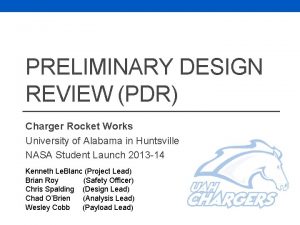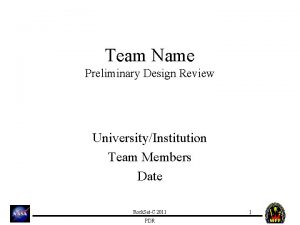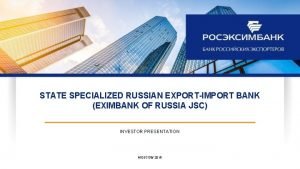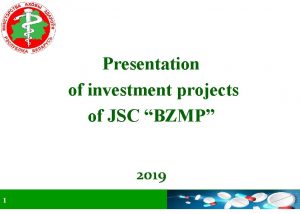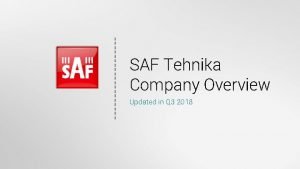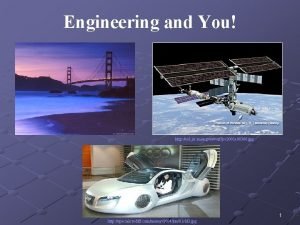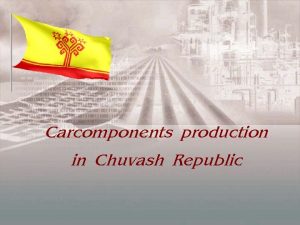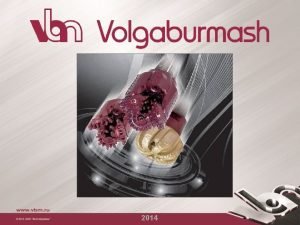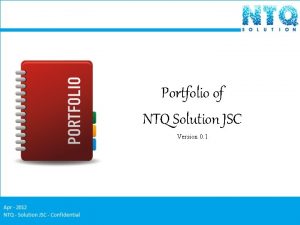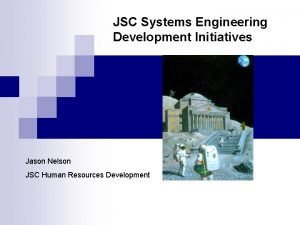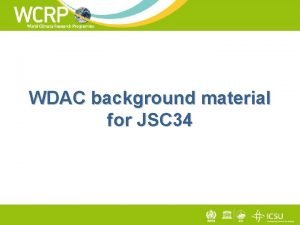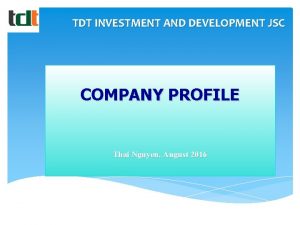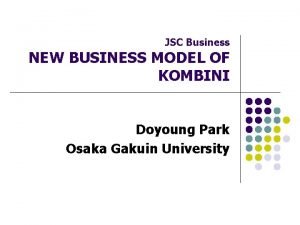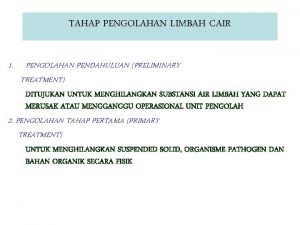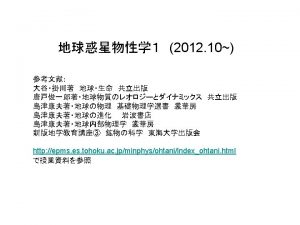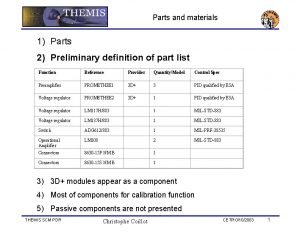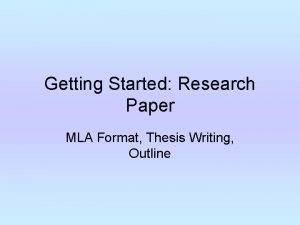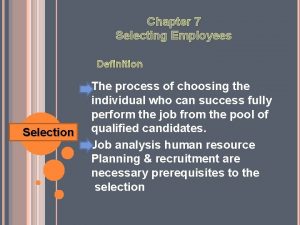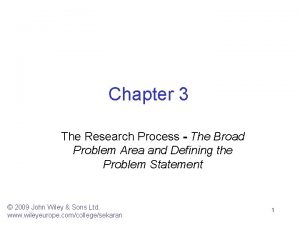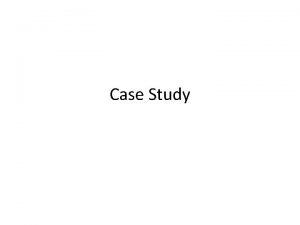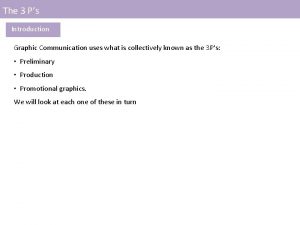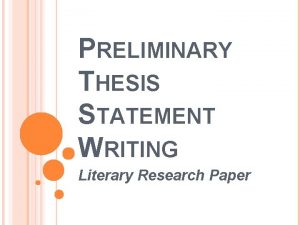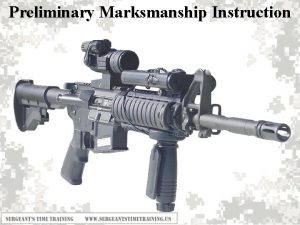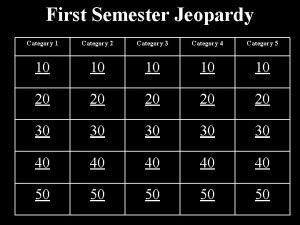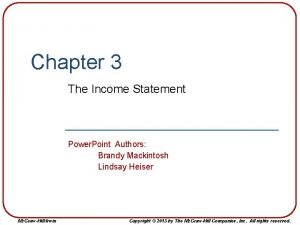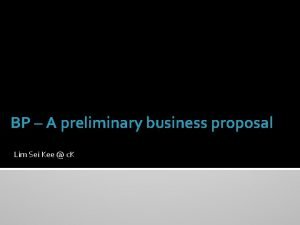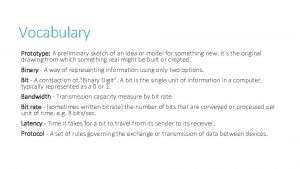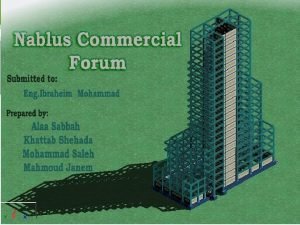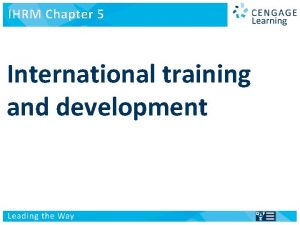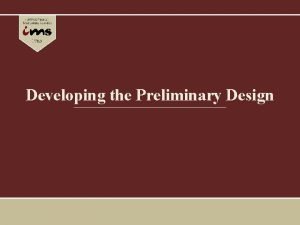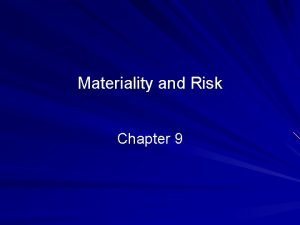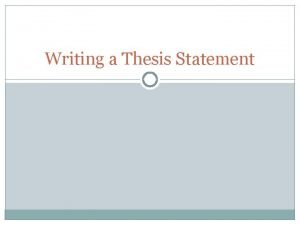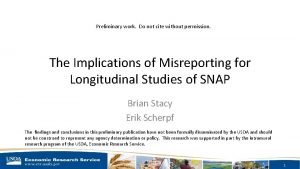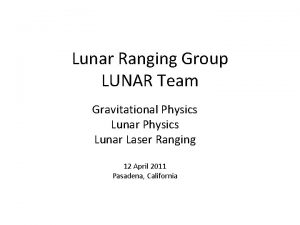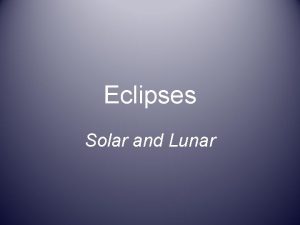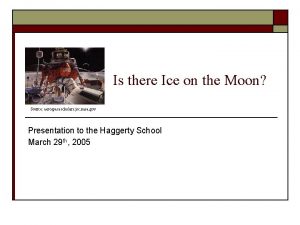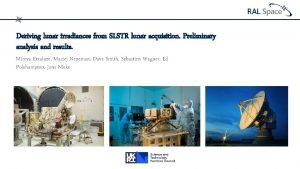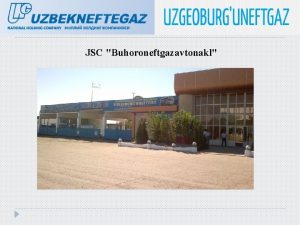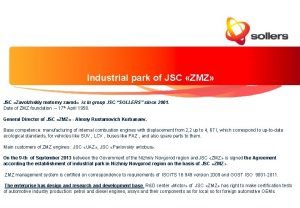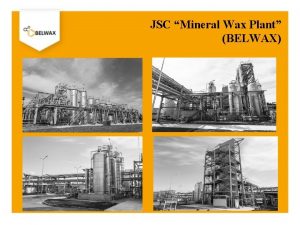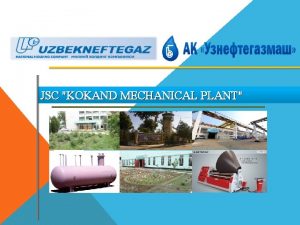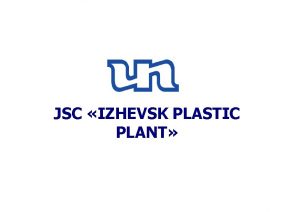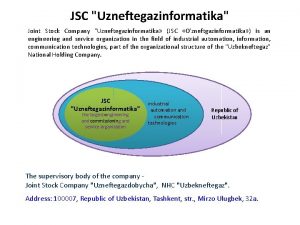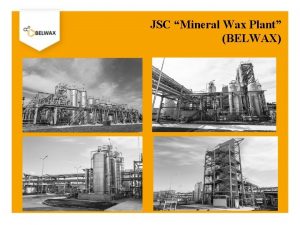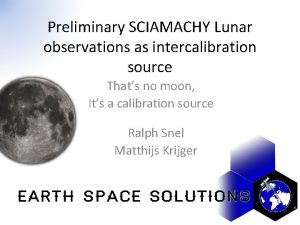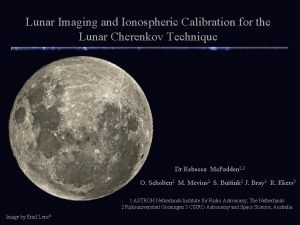Lunar DREEM Preliminary Design Report Source aerospacescholars jsc





![Calculating Tank Mass o o Oxygen Pressure = mass*R*Temp/Volume Radius = [(3/4 pi)*Volume]1/3 Tank Calculating Tank Mass o o Oxygen Pressure = mass*R*Temp/Volume Radius = [(3/4 pi)*Volume]1/3 Tank](https://slidetodoc.com/presentation_image/381484fcb61ca942d5252f06077c4796/image-6.jpg)
















































- Slides: 54

Lunar. DREEM Preliminary Design Report Source: aerospacescholars. jsc. nasa. gov March 10 th, 2005 Jessica Thompson

Presentation Outline o ISOP System n n n n o Summary of results from Conceptual Design Report Trade Study Electrolysis System Design Oxygen Storage Tank Design Radiator Design Hydrogen Recycling Trade Study Furnace Design Process for Further Design Iterations Excavation System n n n Summary of Concepts Analysis of Conveyor Belt Concept Analysis of Drill Concept Bulk Physical Measurement Systems Materials Design Considerations Jessica Thompson

ISOP System Conceptual Design heat Relief valve Conceptual Design Trade Study Results: • Possible Batch Sizes: 5 kg, 10 kg, 20 kg • Processing Time: 3 hours Jessica Thompson

Electrolysis System Slides Space Holder Alice Zhou

Oxygen Storage Tank Design o o Assumptions: 3 kg oxygen, 20°C operating temperature, Spherical shape Material Trade Study Material Yield Strength(Mpa) Beryllium(pure-toxic? ) Aluminum Super alloyxm-19 High strength annealed Aluminum 5052 H 38 Haynes 188 103 Aluminum Tread-Brite H 18 Monel K-500 Density(kg/m 3) 350 48. 3 127 1850 2768 7750 44 2685 8968 27 65 2740. 3 8442. 3 Becca Arvanites
![Calculating Tank Mass o o Oxygen Pressure massRTempVolume Radius 34 piVolume13 Tank Calculating Tank Mass o o Oxygen Pressure = mass*R*Temp/Volume Radius = [(3/4 pi)*Volume]1/3 Tank](https://slidetodoc.com/presentation_image/381484fcb61ca942d5252f06077c4796/image-6.jpg)
Calculating Tank Mass o o Oxygen Pressure = mass*R*Temp/Volume Radius = [(3/4 pi)*Volume]1/3 Tank wall width = Pressure*Radius/Max yield stress Tank mass=Density*Surface area*Width n =Density*4 pi*Radius 2*Width Material Tank Mass(kg) Beryllium(pure-toxic? ) Aluminum Super alloyxm-19 High strength annealed Aluminum 5052 H 38 Haynes 188 59. 8 Aluminum Tread-Brite H 18 Monel K-500 36. 2 39. 4 41. 8 41. 9 69. 7 89. 2 Becca Arvanites

Oxygen Tank Results o o o Lightest (allowably safe) material Aluminum, still much too heavy Looking into alternative composite material Should reduce weight of tank by 37%+ n 39 kg to less than 25 kg Becca Arvanites

Radiator Study o o Purpose n To find a suitable length and mass for a radiator to condense Heated Water Vapor (900 o. C) to Condense Water Vapor (95 o. C) Assumptions n Total incoming flow value, min will be. 002 kg/s n The heat that is released by the water vapor is conducted by aluminum and emitted to space, thus we will calculate the power emitted to space per unit area exposed to the surroundings. n Temperature of the surroundings will be 40 K n Efficiency of the radiator will be around 90% James North

Radiator Study o First, the thickness of the aluminum must be found since we know that the heat generated by radiation should be equal to the heat generated by conduction. Thickness = -K∙( Tsurroundings - Twater)/[ε∙σ∙(Twater 4 – Tsurroundings 4 )] o The aluminum tubing will be cover with Multi Layered Insulation which will allow for the use of MLI’s thermal conductivity to be used to find the thickness. Thickness = 1. 055 x 10 -5 m James North

Radiator Study o Calculations n Iteration process of ΔT = 1 as T > 95 o. C (368 K) Power/Area = ε∙σ∙(Twater 4 – Tsurroundings 4 ) Cp=143. 05 - 183. 54∙(T/100). 25 + 82. 751∙(T/100). 5 - 3. 6989∙(T/100) Length=[min∙Cp*(T - ΔT )] /[η∙ 2∙π∙router∙(Power/Area)] Mass=ρ*π*(router 2 -rinner 2)∙Length James North

Radiator Study Length =. 1772 m Mass = 8. 06 x 10 -4 kg James North

Radiator Study o Must taken into consideration lunar regolith covering the MLI during operations n n n Assume the efficiency of the radiator to drop to 80% Outside regolith may adversely affect the temperature of condensed water vapor exiting the radiator Very important to not have that temperature bet 0 o. C James North

Radiator Study η =. 9 T= 5 o. C Length =. 1956 m T= 95 o. C Length =. 1772 m η =. 8 T= 5 o. C T= 95 o. C Length =. 2201 m Length =. 1993 m Operating Length will be. 2 m Operating Mass will be 9. 09 x 10 -4 kg James North

Trade Study on Recycling Hydrogen o o Hydrogen mass flow: H 2 tank-->Furnace--> (with water vapor) through radiator--> Electrolyzer-->Recycling tubing-->Pump mass flow=. 01 kg/s, flow velocity=. 01 m/s H 2 Flow v >. 01 m/s Furnace Electrolyzer Mass flow=. 02 kg/s Mass flow=. 0198 kg/s O 2 Becca Arvanites

Hydrogen Furnace Flow o o o Needed to check flow velocity >. 01 m/s in furnace: Area = mass flow/(density*velocity) for mass flow of. 02 kg/s: Area < 22 m 2 for flow velocity =. 08 m/s: Area=2. 78 m 2 Becca Arvanites

Hydrogen Recycling o H 2 Recycling to reduce tank weight n o o H 2 mass(no recycling)=flow rate*3 hours*(#batches)>1000 kg Returning hydrogen includes H 2 and hydrogen from water vapor, mass flow=. 0198 kg/s For Radius of 4. 5 cm, Velocity is 35 m/s Becca Arvanites

Hydrogen Recycling o Circulating mass H 2=H 2 flow rate*time n n o o time=distance/flow velocity each section=5. 11 s H 2 mass = 0. 102 kg Weight of Recycling system =length*pi*width 2*densityaluminum Weight=4. 254 m*pi*(. 005^2)*2768=0. 926 kg Becca Arvanites

Furnace Heating Trade Study: Heating Method o Electrical Resistance Furnace o Microwave Furnace o RHU Technology Based Furnace Jo. Hanna P.

Furnace Heating Trade Study: Summary Furnace Design Type Electrical Microwave RHU Pros: - Ability to adjust heat output (i. e. to reach and maintain a constant temp)More even distribution of regolith heating than electrical furnaces- More efficient than electrical furnaces - Heating units are very light - Requires no power from the rover or lander - RHUs are space proven technologies - Design can be specific for this application Cons: - Currently poor estimate for sizing and power requirements - No method for better estimation in the foreseeable future - Not designed for space and never used in space - Currently no information on sizing and power requirements - No method for better estimation in the foreseeable future - Not designed for space and never used in space - Continuously outputting heat - Must design furnace from scratch - Potential for this to not be feasible Jo. Hanna P.

Furnace Heating Trade Study: RHU Technology Based Furnace o Calculations based on Cassini RHU Performance Characteristics n n o o Mass/RHU: 40 g Thermal Power @ BOL: ~1 W Additional assumption: 80% of the heat generated reaches the regolith Results: Less than 2. 3 kg of RHU mass required for the option requiring the highest power levels (10 kg batch with a 1 hr heating time). Jo. Hanna P.

Furnace Heating Trade Study: RHU Technology Based Furnace Design Considerations o o RHUs will continuously output heat; thus, heating the inside of the furnace after the regolith has reached the desired temperature. RHUs will radiate heat in all directions. RHU geometric distribution around the regolith will impact regolith temperature distribution. Regolith heating characteristics will impact regolith temperature distribution. Jo. Hanna P.

RHU Technology Based Furnace: 0 th Order Structural Mass Calculation o Assumptions n n n o Uniform wall thickness of 1/16 in (0. 159 cm) Wall material is Ti-6 Al-4 V Spherical furnace Equation n Mass = density * thickness * inner surface area Jo. Hanna P.

Place Holder for Parametrics Furnace Mass Curve Jo. Hanna P.

ISOPS Design Flow Chart Given: Hydrogen gas flow requirement (Allen and Mc. Kay) Batch Size in Furnace Design Calculations Yield: Radiator – mass flow rate (kg/s) Electrolyzer Design Oxygen Tank Design Furnace hydrogen mass flow (kg/s) Furnace Crosssectional Area Hydrogenrecycling tradestudy *What we have shown today is the first iteration through this design process Jo. Hanna P.

Presentation Outline o ISOP System n n n n o Summary of results from Conceptual Design Report Trade Study Electrolysis System Design Oxygen Storage Tank Design Radiator Design Hydrogen Recycling Trade Study Furnace Design Process for Further Design Iterations Excavation System n n n Summary of Concepts Analysis of Conveyor Belt Concept Analysis of Drill Concept Bulk Physical Measurement Systems Materials Design Considerations Jason Atkins

Excavation System o Includes: n n n o Excavator Subsystem to collect regolith Bulk Physical Characteristics Test Chamber Delivery System to transfer regolith from Excavator Subsystem to ISOPS We discuss preliminary designs for the Excavator Subsystem and Bulk Physical Characteristics Test Chamber n Shape and orientation of Bulk Physical Characteristics Test Chamber constrain choice of Delivery System Jason Atkins

Excavator Subsystem Concepts o Conceptual Design Trade Study identified two promising concepts: n n Conveyor Belt Drill Jason Atkins

Place Holder for Conveyor Belt Slides Jason Atkins

Drilling: Power Considerations Constraints: o Drill depth at least 1 meter deep. o 100 kg of Lunar Regolith must be collected. o Maximum Power Usage= 100 W Emmanuel Sin

Drilling Strategy o o o The Drill will have a cutting edge that will allow it to cut into the Lunar Regolith. As the Drill moves downward, soil will travel up through the flights. “Peck-drilling” will prevent the flights from filling up with soil and thus prevent the Drill from getting stuck. Emmanuel Sin

Drill Concept Although the drill length is constrained to 1 m, certain drill specifications can be manipulated to optimize excavator efficiency: - Drill diameter - Flight design (quantity, angle, width) - Cutting edge - Material selection Emmanuel Sin

Drill: Power Calculations o o P= F*V P= T*W Requires experimental data! Emmanuel Sin

Drill: Mass Calculations Zachary Reynolds

Drill: Operational Time Zachary Reynolds

Calculations o o o Number of holes to drill-> radius of each hole -> torque required to drill hole of this radius-> necessary inner radius of drill to bear such a torque -> mass of drill Assume torque required is proportional to cube of radius of hole Assume 100 W motor ~2 kg (http: //scootersupport. com/motors. htm) Zachary Reynolds

Commercially Available Ice Auger Electra Lazer DP Specifications Twin Serrated Stainless Steel Lazer Blades 12 Volt Battery Pack 12 Volt Battery Charger External Battery Cables 190 -200 RPM Cutting Speed 20 Amp Draw Optional extensions available for cutting through ice thicker than 42“ Electra Lazer 12000 DP 5" 26 Lbs. Electra Lazer 12000 DP 6" 27 Lbs. Electra Lazer 12000 DP 7" 28 Lbs. Electra Lazer 12000 DP 8" 29 Lbs. Source: http: //www. strikemaster. com/electra. html Zachary Reynolds

Bulk Physical Measurement Systems o Three Concepts: n n n Compression Chamber Rotary Bar Pin Pull Jordan Medeiros

Compression Chamber Shear Compartment Compressive Piston Shear Line Mode of Operation: • Sample is loaded into the chamber and compressed to a desired displacement by the compressive piston. The force required to reach such a displacement is backed out by taking the voltage applied by the actuator to the piston. • A voltage is then applied to the second actuator controlling the shear piston. This voltage is slowly increased until a displacement occurs along the shear line. This voltage represents the force required to yield the material. • Using a set of such measurements, we can construct a stress-strain curve for the material and back out other physical characteristics as well. Jordan Medeiros

Rotary Bar Viscosity Tester Compressive Piston Rotary Bar Mode of Operation: • Sample is loaded into the chamber and compressed to a desired displacement by the compressive piston. The force required to reach such a displacement is backed out by taking the voltage applied by the actuator to the piston. • A voltage is then applied to the second actuator controlling the rotary piston. This voltage is slowly increased until a displacement occurs along the rotary line. This voltage represents the force required to yield the material in shear. • Using a set of such measurements, we can construct a stress-strain curve for the material and back out other physical characteristics as well. Jordan Medeiros

Pin Pull Indentation Test Compressive Piston Indentation Pin Mode of Operation: • Sample is loaded into the chamber and compressed to a desired displacement by the compressive piston. The force required to reach such a displacement is backed out by taking the voltage applied by the actuator to the piston. • A voltage is then applied to linear actuator controlling the movement of the indentation pin. By comparing the voltage used (which correlates to force), the area of the pin head in contact with the sample, and the depth of the indentation, we can find characteristics such as material hardness using the same methods applied in nano-indentation applications. Jordan Medeiros

Bulk Physical Measurement Systems o Pros n n n o All the systems require very few moving parts, significantly lowering the chance of failure All the systems require very few sensors to back out the required data All the systems work in any scale, allowing for flexibility in design Cons n n n Both the viscosity tester and indentation system are prone to a problem known as frame compliance – the frame of the testing unit, being of finite stiffness, undergoes a displacement when placed in a state of stress. This must be accounted for by calibrating the test unit. Since it is not known what is the required force to shear the material it is difficult to determine certain design factors – The power of the motors driving the pistons, the required frame material stiffness, etc. These systems do not get direct measurements of the desired characteristics – these must be found using raw data and calculation software. Jordan Medeiros

Other Considerations: Bulk Physical Measurement Systems o Primary factors Affecting physical properties of lunar regolith: n n n Particle structure and distribution Bulk density and porosity Relative density Etienne Toussaint

Other Considerations: Bulk Physical Measurement Systems o Particle structure and distribution n n Variable that controls to various degrees the strength and compressibility of the material The structure and void ratio of the particles can be altered through the excavation process o o While in the test chamber, the particle structure will directly impact the relative density of the regolith and how easy it to compress it or conduct the rotary tests All concepts will alter the particle structure during the compression test, which may make it harder to conduct the test for shear force using the rotary bar and wire pull Etienne Toussaint

Other Considerations: Bulk Physical Measurement Systems o Bulk density and porosity n The mass of the material within a given volume and the volume of void space between particles o o Directly related to particle distribution – if the regolith is densely packed in test chamber with little porosity (would probably occur using drill which grinds soil), bulk density will be high and force required to move the rotary bar or to compress the soil will be great Conversely, soil that not as fine, or possibly deposited in clumps (tread system) may be more porous and thus, not as dense. Less force will be required for compression and the bar test Etienne Toussaint

Other Considerations: Bulk Physical Measurement Systems o Relative density n Again, bulk density of a given soil can vary over a wide range, depending on how particles are assembled o Should take into account when doing various calculations – various ranges of densities possible. Etienne Toussaint

Bulk Physical Measurement Systems Analysis of positive & negative affects of physical properties of lunar regolith on conceptual designs Conceptual Design Compression Chamber Particle structure/distributio n Bulk density/poro sity Relative density Total Affe ct -1 0 0 -1 Rotary Bar 0 -1 -1 -2 Thin Pull 0 -1 -2 -3 Etienne Toussaint

Bulk Physical Measurements o Excavation System n The drill will grind the regolith into small particles as it moves deeper into the ground, decreasing the amount of void space between particles and thus increasing the relative density. o n This will directly effect the force needed to move through the soil and it will cause the soil to be more dense when it is deposited in the test chamber The tread system will pick up the soil in small chunks, maintaining a more realistic depiction of the density of the soil in the ground. Less problems related to relative density will come into play using this system. Etienne Toussaint

Preliminary Materials Selection Conditions to be taken into consideration: o Extremely low temperature n Temperature in shadowed crater assumed to be 40ºK o Extremely n Atmosphere assumed to be hard vacuum o Abrasive n low pressure soil Regolith’s abrasiveness is comparable to that of glass Victoria Harris

Preliminary Materials Selection Lubricants 1 o Choose interfacing materials that have different crystal structures and atomic sizes o Wet lubrication n o Oils will most likely not work in low temperatures Dry lubrication n n Some work in low temperatures (eg molybdenum disulfide) Shorter service life Victoria Harris

Preliminary Materials Selection Metals 2 o Most metals will work n n o Some material properties will change at low temperature n o E. g. stainless steels, aluminum alloys Exceptions include nickel steels E. g. coefficient of friction Composites are also a possibility Victoria Harris

Preliminary Materials Selection Insulation/rubber o Rubber suitable for constructing a conveyor belt will not withstand low temperatures 3 n o Other belt designs must be investigated Typical insulators used in cryogenic applications can be applied n E. g. ethylene-propylene 4 Victoria Harris

Bibliography 1. 2. 3. 4. Virgil R. Friebel and James T. Hinricks. “Lubrication for vacuum applications. ” Journal of Vacuum Science and Technology. January 1975. Volume 12, Issue 1, pp. 551554. JG Weisend, ed. Handbook of Cryogenic Engineering. Hamburg, Germany: Taylor and Francis, 1998. www. mcmaster. com Atsushi Minoda and Yasuichi Mitsuyama. “AC Treeing of Ethylene-Propylene Rubber in Cryogenic Temperature Region. ” Electrical Engineering in Japan, Vol. 124, No. 3, 1998. Victoria Harris

Outreach Update Julie Arnold

Ordering Laboratory Materials Julie Arnold
 Preliminary design review example
Preliminary design review example Pdr preliminary design review
Pdr preliminary design review Preliminary design review example
Preliminary design review example Npls
Npls Jsc bzmp
Jsc bzmp Tehnika 3
Tehnika 3 Dr. tomas karpavičius
Dr. tomas karpavičius Eol civil engineering
Eol civil engineering Jsc' elara
Jsc' elara Volgaburmash
Volgaburmash Ntq solution
Ntq solution Maz euro 6
Maz euro 6 Jsc systems
Jsc systems Jsc 34
Jsc 34 Tdt investment and development joint stock company
Tdt investment and development joint stock company Lll
Lll Preliminary budget
Preliminary budget Preliminary treatment adalah
Preliminary treatment adalah Preliminary survey
Preliminary survey P 波
P 波 Preliminary materials
Preliminary materials Preliminary outline example
Preliminary outline example Preliminary interview
Preliminary interview Statement of the problem in research
Statement of the problem in research Hopi corporation expects the following
Hopi corporation expects the following Pinakaunang pahina ng pamanahong papel
Pinakaunang pahina ng pamanahong papel Preliminary graphics
Preliminary graphics Goto/sdlc
Goto/sdlc Objective thesis statement
Objective thesis statement Preliminary rifle instruction
Preliminary rifle instruction Arrt preliminary score
Arrt preliminary score Image of development
Image of development “gauge” refers to what quality of the film strip?
“gauge” refers to what quality of the film strip? Determine junktrader’s preliminary net income.
Determine junktrader’s preliminary net income. Disulfide bonds in hair
Disulfide bonds in hair Preliminary business plan
Preliminary business plan Preliminary prototype
Preliminary prototype Preliminary audit procedures
Preliminary audit procedures Preliminary outline
Preliminary outline Preliminary strand test
Preliminary strand test Shower approach marketing
Shower approach marketing Components of effective pre-departure training programs
Components of effective pre-departure training programs Preliminary objectives
Preliminary objectives Advertising research process
Advertising research process Preliminary statement meaning
Preliminary statement meaning Preliminary review definition
Preliminary review definition Preliminary materiality
Preliminary materiality Ifsqn
Ifsqn Preliminary marketing plan
Preliminary marketing plan What is situational analysis first aid
What is situational analysis first aid Thesis statement fill in the blank
Thesis statement fill in the blank Preliminary ruling
Preliminary ruling Introduction of recruitment and selection
Introduction of recruitment and selection Preliminary works cited
Preliminary works cited Preliminary research
Preliminary research
